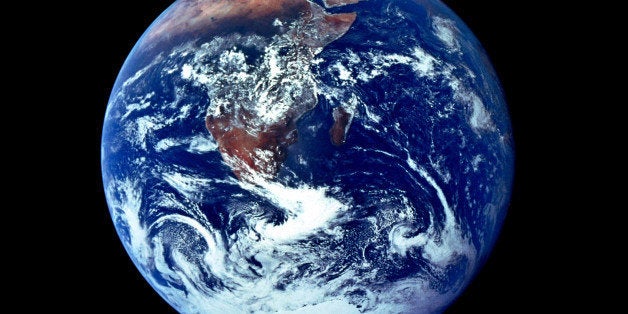
Co-Authored by Nithya Ramanathan, President and Co-Founder of Nexleaf Analytics; Durwood J. Zaelke, founder of the Institute for Governance and Sustainable Development; and Veerabhadran Ramanathan, Distinguished Professor of Climate Sciences at the Scripps Institution of Oceanography at University of California, San Diego
Two weeks ago, Pope Francis said: "if we destroy Creation, in the end it will destroy us." Following a Vatican summit on sustainability convened by one of us that discussed the dangers of climate change and global warming, the Pope's stern warning asked all of us to be better stewards of nature. But many people wonder what they can do to join the fight against global warming beyond buying a Prius and installing solar panels in their homes.
We know that global warming is primarily caused by the release of carbon dioxide and that the planet has warmed by more than 1°F. This week's announcement by the U.S. Environmental Protection Agency to cut carbon pollution from coal-fired power plants by almost one-third is a great step in the right direction. But global warming is not only caused by carbon dioxide. Climate change is a multifaceted problem that requires a multifaceted set of solutions. We need solutions to address all forms of climate pollution. We can start immediately reducing other climate pollutants to complement efforts to cut carbon dioxide. Roughly 40 percent of the heat added to the planet is from a class of climate pollutants that are the second biggest contributor to climate change after carbon dioxide. These climate pollutants only stay in the atmosphere for a few days to a decade and a half. That means that actions taken today to reduce these short-lived pollutants can have immediate and measurable impacts in slowing down global warming.
Short-lived climate pollutants include methane from the garbage we put into our landfills and other sources, black carbon from dirty diesels, open burning and primitive cooking, lower level ozone (the main component of urban smog) and coolants for refrigerators and air conditioners. In addition to warming the planet, these pollutants also contribute to approximately seven million premature deaths and wipe out billions of dollars of crops every year.
The good news is that scientifically supported and scalable solutions already exist to reduce these pollutants drastically. These solutions can be implemented locally. For example, we can help the poorest of the poor use cleaner-burning technologies such as clean cookstoves and solar lamps in their homes. There are a number of clean cookstove programs that enable donors to purchase these items and bring them into homes in the developing world. This would eliminate one-third of all black carbon, the second largest contributor to climate change. We can install filters in diesel vehicles to eliminate black carbon from tailpipes of diesel vehicles.
Another example is to replace the current coolants used in refrigerators and air conditioners, which are more than a thousand times more powerful in warming the world than carbon dioxide. Replacements are already available for most purposes. Methane, which is 25 times more potent than carbon dioxide, can be recovered from waste dumps and used as energy source. By adopting these and other proven and scalable solutions at local to national scales, we can cut the warming trend in half over the coming decades, and help keep us in the game while we continue to move to the clean energy future that will also eliminate carbon dioxide. Just as important, these solutions will radically clean the air we breathe, saving millions of lives around the world.
Given the simultaneous health benefits, there is growing political will to make these cuts throughout the world, including in China, the U.S. and other major economies. Elected officials just need a nudge from us to provide the laws and institutions the world needs to put the solutions in place. Even elected officials who are skeptical about the effects of carbon dioxide on climate change can see poisonous black carbon in the air and understand its threat to health and crops.
Imagine a storeowner who knows that most weather forecasters are predicting a hurricane. The storeowner could hide behind the uncertainty of the forecast and do nothing or she could buy supplies to protect her store just in case the weather is even half as bad as predicted.
Like the storeowner protecting her livelihood, we can and should cut these other climate pollutants, which will simultaneously improve the health of millions around the world. If we protect the planet, it will continue to provide for us and all our children in the future.
To learn about how rural women in India are protecting the planet and their family's health from harmful pollution, check out Project Surya, a clean cookstove project, led by N.Ramanathan, I.H. Rehman and V.Ramanathan, currently distributing clean-burning cook stoves and solar lighting India and Kenya and documenting their impacts on public health and climate change.